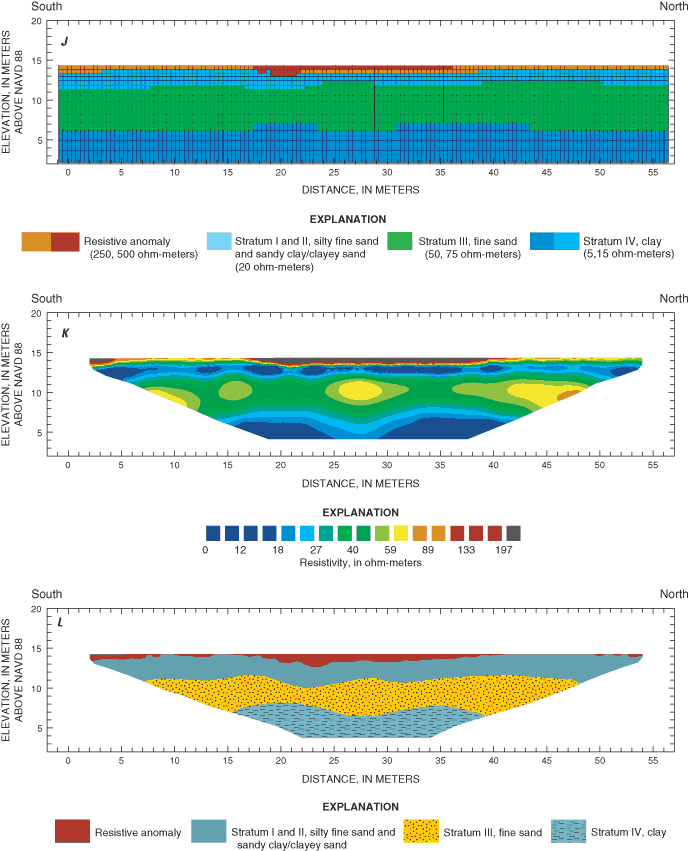3d Resistivity Inversion Software Update
Two-Dimensional Resistivity Investigation of the North Cavalcade Street Site, Houston, Texas, August 2003 Scientific Investigations Report 2005-5205 Prepared in cooperation with the U.S. Environmental Protection Agency Two-Dimensional Resistivity Investigation of the North Cavalcade Street Site, Houston, Texas, August 2003 By Wade H. Kress and Andrew P. Teeple Table of Contents Figures Tables Conversion Factors and Datums Multiply By To obtain Length inch (in.) 2.54 centimeter (cm) foot (ft) 0.3048 meter (m) Vertical coordinate information is referenced to the North American Vertical Datum of 1988 (NAVD 88). Horizontal coordinate information is referenced to the North American Datum of 1983 (NAD 83). Elevation, as used in this report, refers to distance above the vertical datum.
- 3d Resistivity Inversion Software Update For Windows 7
- 3d Resistivity Inversion Software Update Tool
- 3d Resistivity Inversion Software Updates

The North Cavalcade Street site was first developed for wood treating in 1946. By 1955, pentachlorophenol wood preservation services and other support facilities, such as creosote ponds, pentachlorophenol and creosote storage structures, various tanks, lumber sheds, a treatment facility, and other buildings had been added. In 1961, the property was closed.
To protect public health and welfare and the environment from release or threatened releases of hazardous substances, the U.S. Environmental Protection Agency added the North Cavalcade Street site to the National Priorities List on October 5, 1984. Between September 1985 and November 1987, the U.S.
Environmental Protection Agency conducted a remedial investigation which, through exploratory drilling, determined the locations of two contaminated source areas and a normal fault. During August 2003, the U.S.
Geological Survey, in cooperation with the U.S. Environmental Protection Agency, conducted a two-dimensional (2D) resistivity investigation at the North Cavalcade Street site to provide additional characterization of the dense non-aqueous phase liquids and the lithologies that can influence contaminant migration. Delonghi bar32 retro manual click 1. The 2D resistivity investigation used a capacitively coupled (CC) resistivity method as a reconnaissance tool to locate geophysical anomalies that could be associated with possible areas of creosote contamination. The inversion results of the CC resistivity survey identified resistive anomalies in the subsurface near the eastern and western contaminated source areas. A direct-current (DC) resistivity survey conducted near the CC resistivity survey confirmed the occurrence of subsurface resistive anomalies.
The inversion results of the DC resistivity survey were used to define the subsurface distribution of resistivity at each line. Forward modeling was used as an interpretative tool to relate the subsurface distribution of resistivity from four DC resistivity lines to known, assumed, and hypothetical information on subsurface lithologies. The final forward models were used as an estimate of the true resistivity structure for the field data. The forward models and the inversion results of the forward models show the depth, thickness, and extent of strata as well as the resistive anomalies occurring along the four lines and the displacement of strata resulting from the Pecore Fault along two of the four DC resistivity lines. Ten additional DC resistivity lines show similarly distributed shallow subsurface lithologies of silty sand and clay strata.
Eight priority areas of resistive anomalies were identified for evaluation in future studies. The interpreted DC resistivity data allowed subsurface stratigraphy to be extrapolated between existing boreholes resulting in an improved understanding of lithologies that can influence contaminant migration. The study area referred to as the North Cavalcade Street site is about 1 mile southwest of the intersection of Loop 610 North and U.S.
59, Houston, Harris County, Texas (fig. The North Cavalcade Street site was first developed for wood treating by the Houston Creosoting Co., Inc. (HCCI) in 1946. HCCI increased its capabilities in 1955 by adding pentachlorophenol (PCP) wood preservation services and other support facilities, such as creosote ponds, PCP/creosote storage structures, various tanks, lumber sheds, a treatment facility, and other buildings. The property was closed in 1961 and sold in 1964 to Monroe Ferrell Concrete Pipe Company. Since that time, no industrial activity has taken place on the North Cavalcade Street site (CH2M Hill, 2003). To protect public health and welfare and the environment from release or threatened releases of hazardous substances, the U.S.

Environmental Protection Agency (USEPA) proposed that the North Cavalcade Street site be added to the National Priorities List on October 5, 1984. By June 10, 1986, the site was added to the final list (CH2M Hill, 2003). More detailed information on the location and history of the North Cavalcade Street site is provided by the USEPA (2003). The USEPA initially responded by conducting a Remedial Investigation (RI) between September 1985 and November 1987 to characterize the North Cavalcade Street site. Air, sediment, soil, surface-water, and ground-water samples were collected during the RI and analyzed for toxic substances associated with wood preservation sites (U.S. Environmental Protection Agency, 2003). During the RI, 15 borings, ranging in depth from 15 to 80 feet, were collected and used to describe the basic stratigraphy of the North Cavalcade Street site.
The locations of two contaminated source areas and a normal fault (Pecore Fault) that trends generally east to west near the southern boundary were identified during the RI (figure 2-4 and exhibit 2, Camp Dresser & McGee Inc. (CMD), 1987). These features were digitized and are included in figure 2 of this report. According to CH2M Hill (2003, p. 8), 'The USEPA released a Record of Decision (ROD) in 1988 which required onsite biological treatment of soils containing carcinogenic polyaromatic hydrocarbons (PAHs). The ROD also required for groundwater to be extracted and treated until all non-aqueous phase liquids (NAPLs) were completely removed. However, since the first five year review of the ROD (July 1998), additional site characterization has confirmed that the dense non-aqueous phase liquid (DNAPL) extends to a deeper interbedded sand aquifer at 25 to 40 feet below surface.'
3d Resistivity Inversion Software Update For Windows 7
Typically, additional environmental site characterization used to determine depth and extent of DNAPLs and the lithologies in which they are contained has been through exploratory drilling. The accuracy of environmental site characterization is dependent on the number of sample points or borings and the ability to interpolate between these sample points (American Society for Testing and Materials, 1999). Interpolation between sample points may be poorly constrained and lead to an inaccurate site characterization. An alternative approach is to combine surface geophysical methods with a drilling program. Surface geophysical measurements can be made relatively quickly, are minimally intrusive, and enable interpolation between known points of control (American Society for Testing and Materials, 1999). To provide additional characterization of the DNAPL and the lithologies that can influence contaminant migration, the U.S. Geological Survey (USGS), in cooperation with the USEPA, conducted a two-dimensional (2D) resistivity investigation, using capacitively coupled (CC) and direct-current (DC) resistivity methods, at the North Cavalcade Street site during August 2003.

3d Resistivity Inversion Software Update Tool
Purpose and Scope This report describes the methods and results of a 2D resistivity investigation of the North Cavalcade Street site conducted in August 2003. The purpose of this report is to document the inversion results of the CC and DC resistivity surveys, forward modeling and interpretation of four selected lines of DC resistivity data using lithologic descriptions of existing boreholes, and the interpretation of 13 DC resistivity lines at the North Cavalcade Street site. Hydrogeology The geology of the North Cavalcade Street site consists of interbedded clays, silts, and sands associated with the Beaumont Formation, with a ground-water level approximately 4 feet below land surface (U.S. Environmental Protection Agency, 2003). The Five Year Review Report by CH2M Hill (2003) indicated two water-bearing units underlying the North Cavalcade Street site: the shallow sand aquifer and the interbedded sand aquifer. The shallow sand aquifer was described as occurring at a depth of about 15 feet below land surface and is hydraulically connected to the interbedded sand aquifer, consisting of interbedded silty sand and clay, ranging in depth from about 25 to 40 feet below land surface (CH2M Hill, 2003). These water-bearing units are underlain by a regional confining clay that is about 100 feet thick and serves as a barrier to the downward migration of contaminants (CH2M Hill, 2003).
3d Resistivity Inversion Software Updates
The basic stratigraphy of the North Cavalcade Street site was characterized in the RI as containing four distinct soil strata.